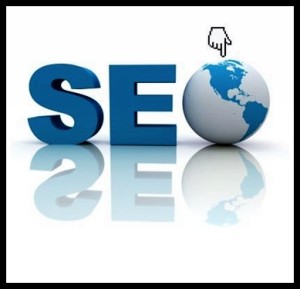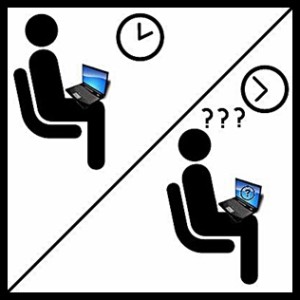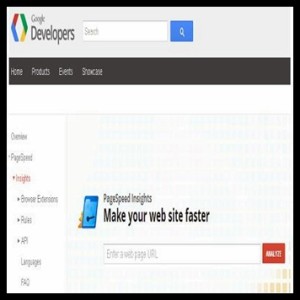This is a Guest post By Emma Tomlinson.
Whether you have a blog or an e-commerce site, you need to optimise your webpages. And there is no wondering why you have to do this. The fact that you are targeting an audience means that you have to do everything you can to grab their attention. With the help of search engine optimisation (SEO) as well as other Web strategies, this will not be too difficult to accomplish.
There is no doubt that SEO helps greatly in boosting your rank in SERPs, which in turn increases your visibility. Hence, most (if not all) webmasters exert every ounce of their effort and time (plus, a little budget) to apply the best optimisation techniques.
The Conflict between Too Much Appeal and Page Load Speed
The only problem is that some of these professionals tend to forget an important aspect – page load time. In the hopes of making their content attractive, they integrated plenty of graphics and images thinking that this can help. However, it only slowed down the loading speed of their website.
The Effects of Slow Page Load Time
As a result, it affected several usability factors such as the following:
- Bounce rate (the number of users leaving the site on the page they have entered)
- Conversion rate (the number of users turned into customers)
- Queries per user
- Quality rating
- Perceived credibility and aesthetic perception
- Compatibility and friendliness to mobile devices
But, perhaps, the biggest impact of slow page speed is the bad impression it gives to the visitors.
The Solutions to a Sluggish Website
Before anything else, find out just how slow your site is. You can do this by accessing a certain page (maybe one that has several images on it) and timing its loading time. Based on the length, you will know just how better your website is than the other portals.
- 5 seconds – It is 25% faster.
- 2.9 seconds – It is 50% faster.
- 1.7 seconds – It is 75% faster.
- 0.8 seconds – It is 94% faster.
Alternatively, you can perform a speed test using Google PageSpeed Insights.
Through it, you can analyse a webpage’s content to determine which components are slowing down your site. Then, it offers you recommendations on how to enhance the loading speed.
Simple Ways to Boost Page Load Speed
Here are some of the common suggestions you get from Google and some webmasters.
1. Use CSS sprites
This method allows you to lessen the amount of server requests because you can compress plenty of pictures in one image. Though, as a note, you have to use certain applications to make the process of fitting several images less time consuming. This idea usually applies to sidebar, header, footer, background, and static advert icons or photos.
2. Lessen image sizes
You can do this by using a tool that helps compress large bytes without decreasing the pictures’ quality.
3. Bring plug-ins and software applications up to date
Does your website has discontinued, out-of-date, and unsupported elements (e.g. themes, add-ons, plug-ins, etc.)? If it does, you have to know that these can affect the pages’ loading speed. To fix the problem, all you need to do is update all of these.
4. Avoid using too much embeds
These are files incorporated to a webpage for two main purposes – extra appeal and better data comprehension. When it comes to the former, some of the common types include graphics and Flash images, while the latter usually encompasses tracking or analytic scripts.
Embeds are wonderful add-ons on to your site; however, placing too many can lead to a sluggish loading speed. Hence, you need to limit their use.
5. Cache webpages
Caching lets computer browsers save resources, which the Web servers have sent locally. Known as browser caching, it gives the users lesser time to look for the same information because their PC already has cached versions of the pages.
On the other hand, caching enhances your page load speed in a way that it makes your site more responsive whenever some visitors try to access it. Additionally, it helps you lessen and manage bandwidth requirements, which can be very cost-effective if you are settling an amount for the traffic you get.
6. Switch to a better hosting service
If you currently have a shared IP package, this can have a considerable impact to your website’s loading time. You can remedy this by transferring to a dedicated IP service provider. Alternatively, you can seek a private virtual server for a more enhanced page load speed and better site security.
Through these ideas, you have a higher chance of increasing your ranking in search results. What is more, you can make the users want to stay longer on your pages.
As a conclusion, you have to know that these are just basic tips. If you want to learn more insights on this topic, you can always talk with experienced webmasters. You can also gain deeper knowledge by studying.
About the Author: Emma Tomlinson is the Head of Retail at Smart Traffic, a fast-growing private technology company in Britain offering SEO services to several companies around the globe.




Hey great share Amit , which hosting do you really recommend? i m on blue host and really pleased by it , but i have 2sites on it and planning to get separate hosting for each site.
suggest me some good and reliable.
Hi Saad, you may use Hostgator – it’s really good, stable and with easy to use panel.
@Emma – thanks for sharing your tips. I’m using WP with W3 Total Cache – it works very well for me
BR, Chris
I also use HostGator, in more than 2 years, my sites went down a couple of time and for few hours.
Not long ago, I was attacked by a malware in one of my niche site,
and HostGator technician removed it in less than 3 hours, after my ticket.
I was able to make my first site a lot faster, just arranging some settings in W3 Total Cache.
Here you find a step by step guide to how set correctly the plugin :
Nice post, Amit!
Your welcome, Chris. And, thanks for sharing your insight.
And, thanks for sharing your insight.
Caching is not used by many out there, but it can help if your options are limited. Good thing you mentioned that over here.
Too many plugins can also hurt your speed too.
Good day, Samuel. Yes, caching can be useful to many webmasters. And, you are right about the plug-ins. Website owners must install only those that are really needed.
Thanks for your insight.
nice but the speed also depends on the server if the server is not good then their is no use of using plugins i think so.
I did by best to make my blog load faster and now It’s really loading little faster than before. I will surely follow your steps Amit.
You did right job removing the Hostgator ad from the top head of your blog. It was responsible of slow loading of your blog.
Most bloggers, as well as the readers, find page load speed a very important aspect.
Site Speed plays a vital role on the ranking of a site on Search Engine and visitors also want fast loading sites. Thanks for sharing these tips with us.
Yes, a website’s loading speed is indeed a vital factor for search engines and the users. Thanks for your appreciation.
Again an awesome post from itechcode. There are a lot of bad impacts if page loading time is too high. WordPress sites are easy to optimize for faster performance. It should also help to improve SEO as well
Ramnadh
Thank you for the compliment and for the insights you have added.
I have my site hosted on the hostgator Indain servers, and these are the slowest servers I have ever seen in my life. Now, Planning to go for Dreamhost or Bluehost. Can you plz suggest which one is better.
Hmm, your selection actually depends on which one you think can provide your needs better.
Thanks for sharing this article right now i am on HostGator and quite happy with it and W3TC and MaxCDN is providing some really good results.
right now i am on HostGator and quite happy with it and W3TC and MaxCDN is providing some really good results.
Have a good day.
A slow page load speed is bad for a business. Thanks for your appreciation.
Hi Jeet, You’re welcome and thanks too for your appreciation. I hope you found my post helpful. Have a great day.
Using too many images generally cause high page load time. It can be corrected by using less images and using low size images.
Hi, Aasma Thank you for adding your own insight on the topic.
Thank you for adding your own insight on the topic.
W3 cache + CDN + Image Optimization with CSS Sprites + loading Style sheets in the end = Super Page load speed.
Exactly, Shekhar. These ideas can help greatly in boosting page load speed.
Google also prefers the blog which has less loading time. You can’t get good amount of visitors if your blog has a long loading time. big images can increase the loading time, so small images can help a lot. Thanks for sharing the article with us.
You’re welcome, Sanjib, and thanks for your additional information and appreciation.
Hello Emma,
Yeah! Speed matters a lot for bloggers, readers and also for search engines. The faster your website is the more your visitor going to like your website because nobody likes to wait.
The main villains behind slow websites, blogs are not well coded theme, using to much images in theme, website. And obviously hosting on cheap servers. We should try to avoid things which increase the loading time of our website, or try to use them in a way that speed of our website don’t increase. Like using css sprite images, well structured code, compress images and many other things.
BTW, awesome article….
Romy Singh,
Hi, Romy. I’m glad you think my article is awesome. Thanks for showing your appreciation and for adding your own insights. Have a great day!
speed matters a lot. Even Google give low rank to slow sites as I heard.
Hello, Atish. Yes, Google considers quick page load speed a factor in ranking websites.
Yes, Google considers quick page load speed a factor in ranking websites.
Nice tips, a site with high loading speed is admired not only by the readers but by the search engines too. A good host is must to improve website speed.
Thank you, Tarun. Based on most SEO guidelines, we must create a website with the users and search engines in mind.
Based on most SEO guidelines, we must create a website with the users and search engines in mind.
Hey,
I appreciate you all and agree with you. Although i am using BigRock hosting. And if i would go frankly then it has also nice service. BTW much of ProBloggers use Hostgator Hosting but i don’t have much budget to manage Hostgator.
So, i went for BigRock.
Hi Amit,
I already told you that iTechCode motivate me and inspire me really much in Blog Arena.
The best thing i like is that you always publish effective and informative posts. Your every post is stable and honest.
This post is awesome as Emma has mentioned simple and basic ways to Reduce Load Time. BTW i am following all the steps except the 2nd one. Now i’ll surely try this too.
Thanks
Ashwani Ahlawat
Hello, Ashwani. Thank you for appreciating my post. I’m happy that you learned something from it. Have a good day.
Thank you for appreciating my post. I’m happy that you learned something from it. Have a good day.
Hey Emma, it’s totally my pleasure that i learned something new from iTechCode. BTW it’s not my first time that i have learned something effective and new from here. How many times i found great and effective tips regarding blog improvement her.
All is just me too want to be like Amit Shaw.
You can be a great blogger too, especially when you dedicate your time and increase your knowledge about it.
Thanks a lot Emma.
Hello Emma,
Great post! Thanks for sharing. Yeah you are correct about sites and pages that load too slow can hurt your business. People these days want faster user experience so we need to make sure we deliver exactly just right that.
That being said, what tool o you use in #2? And how much do you pay every month for your dedicated server? Thanks again and keep up the great work!
-Sonny
You’re welcome, Sonny :). Thanks too for your appreciation. As for your question about image tools, Photoshop is great because it has plenty of wonderful features. Most of all, it lets you edit high-quality pictures. And, as for a suitable dedicated server, you will know that you have the right selection when it meets your requirements. So, do not forget to look into your own needs when choosing a service provider.
i think better hosting service plays very important role many hosting are slow & makes blog sluggish location of servers also play important role we should think about it before choosing hosting
You are correct, it is important to choose the right hosting service. Thanks for your insight.
Hey,
I appreciate you all and agree with you. Although i am using BigRock hosting
Your point number 1 and 2 is something on which I have to consider. I am always facing problem with CSS sprit. Because of that YSlow gives me 72 ( always ) . But I think their are many more methods.. Like we can use CSS minification, javascript compression, CDN.
Finally great post..
Hi Amit, you have done a good job here sharing how to boost the speed of a website. Nicely done!
Nicely done!
“You can do this by using a tool that helps compress large bytes without decreasing the pictures’ quality.”
Which tool are you talking about here please tell me.
I use Google Page speed service on my blog and it is awesome.. 97/100 page speed